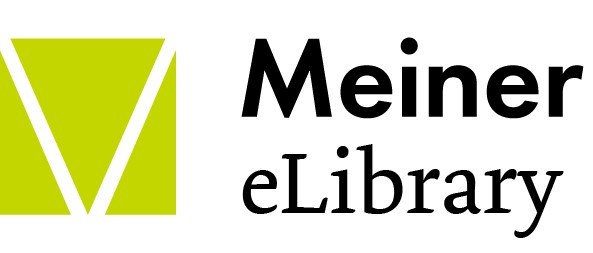Does art have to be moral? The first point that might be made is that this question is not necessarily a question ›in‹ aesthetics. Indeed, the philosophy of art should be considered as research into the concepts, implications, scope, and workings of artistic practise and reception. In that sense, the moral evaluation of art would be no different from the moral evaluation of any other human activity. All of the questions raised by the focus of this issue would thus remain essential, but would be beyond the scope of aesthetic theory. There is, however, a more fundamental point to be made. Contemporary philosophers give us very probing taxonomies of the various positions possible with respect to any ethical approach to art. But whether one opts for ›Autonomism‹, ›Moralism‹, or ›Immoralism‹, one could be drawn to acknowledge the operation of what I call the metaethical effect of art. This metaethical effect is not to be seen as the formulation of a specific message, moral, or value, but as the kindling and refinement of an awareness of the notion of value itself, and of the nature of evaluation, interpretation, and shared judgment. The argument would thus be that all works, be they moral, immoral, amoral, be they concrete and narrational or purely non-figurative and non-referential, provoke a reaction that teaches us the form of shared judgment.
- | Kapitel kaufen CoverU1
- | Kapitel kaufen Inhaltsverzeichnis3
- | Kapitel kaufen Abstracts5
- | Kapitel kaufen SCHWERPUNKT: Moral-Kunst · Darf Kunst moralisch sein? | Kunst-Moral · Muss Kunst moralisch sein?11
- | Kapitel kaufen Noch einmal: zur Einführung. Von Reinold Schmücker und Philipp Theisohn11
- | Kapitel kaufen Gewalt, Mord und Antihelden – Moral im KinoEin kritischer Essay. Von Maria Wiesner17
- | Kapitel kaufen I. Einleitung: Verderben Filme das Publikum?17
- | Kapitel kaufen II. Vom Kino inspirierte Verbrecher?18
- | Kapitel kaufen III. Moralische Abgründe: die modernen Antihelden19
- | Kapitel kaufen IV. Wo die Zensur zuschlägt21
- | Kapitel kaufen V. Wer entscheidet, wie moralisch wertvoll Kunst ist?21
- | Kapitel kaufen Die Untugend der Kunst. Pragmatistische Reflexionen über den Kitsch anlässlich des gegenwärtigen Krieges. Von Albert Dikovich23
- | Kapitel kaufen I. Einleitung23
- | Kapitel kaufen II. Das Ästhetische und die Moral24
- | Kapitel kaufen III. Die Untugend der Kunst: das Beispiel des Krieges30
- | Kapitel kaufen IV. Ein Gegenbild: Goya37
- | Kapitel kaufen V. Schluss: thanateischer Kitsch39
- | Kapitel kaufen Der kalt erwiderte Blick. Oscar Wilde, die Nebensächlichkeit der Kunst und das Unästhetische der Existenz. Von Christoph Paret43
- | Kapitel kaufen I. Ästhetisch Untersagtes43
- | Kapitel kaufen II. Der kalte Blick – eine kurze Genealogie der ›Rezeption‹49
- | Kapitel kaufen III. Leben als Nachleben – Schwierigkeiten der ›Ästhetik der Existenz‹54
- | Kapitel kaufen IV. Der Ästhetizismus und die Lizenz ›schlechter Kunstwerke‹60
- | Kapitel kaufen The Metaethical Turn: Beyond ›Good‹ and ›Evil‹. By Ronald Shusterman65
- | Kapitel kaufen I. Rocket Science65
- | Kapitel kaufen II. The Fact/Value Distinction: Beyond ›Good‹ and ›Evil‹66
- | Kapitel kaufen III. The Principle of Non-Neutrality and the Moral Impossibility ofAbsolute Autonomism69
- | Kapitel kaufen IV. From Epistemology to Metaethics: Dizziness and the Art of Olafur Eliasson71
- | Kapitel kaufen V. Conclusion74
- | Kapitel kaufen Framing people’s justice. Normative Aporien des interkulturellen Dialogs über Kunst am Beispiel der documenta fifteen. Von Aude Bertrand-Hoettcke und Matthias Kettner75
- | Kapitel kaufen I. Einleitung75
- | Kapitel kaufen II. Die politische Problematik: BDS, Antisemitismus und die Kunst von Taring Padi77
- | Kapitel kaufen III. Die organisationsethische Problematik: Verantwortungsdiffusion80
- | Kapitel kaufen IV. Die ästhetische Problematik: mangelnde Kulturreflexion85
- | Kapitel kaufen V. ›Whose Justice?‹ Diskursethik und die potentiell aporetische Diskussionskultur multikultureller Kunstausstellungen94
- | Kapitel kaufen VI. Hilft das kunstphilosophische Konzept einer ›ästhetischen Verantwortung‹ weiter?98
- | Kapitel kaufen ABHANDLUNG101
- | Kapitel kaufen Die Ausstellung als geopolitische Versuchsanordnung. Künstlerischer Wissenstransfer und transmediale Vermittlung in Latours Gedankenausstellung »Critical Zones – Horizonte einer neuen Erdpolitik«. Von Birgit Mersmann und Hauke Ohls101
- | Kapitel kaufen I. Die Kritische Zone in der Gedankenausstellung101
- | Kapitel kaufen II. Ausstellungspolitik als Erdpolitik105
- | Kapitel kaufen III. Lessons to be learned: Interaktionen zwischen Kunst und Erdwissenschaft124
- | Kapitel kaufen BESPRECHUNG127
- | Kapitel kaufen Wolfgang Hottner: Kristallisationen – Ästhetik und Poetik des Anorganischen im späten 18. Jahrhundert, Göttingen: Wallstein 2020, 278 S.127















